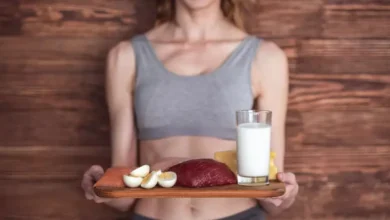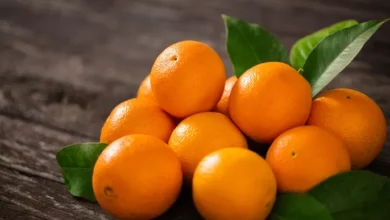The Best Whole Grains for a Healthy Diet
When it comes to improving your diet, one of the simplest and most effective steps is swapping refined grains for whole grains. These nutritional powerhouses are rich in fiber, vitamins, minerals, and antioxidants—and they offer a steady source of energy that helps keep you full and satisfied.
Unlike refined grains, which are stripped of most nutrients during processing, whole grains retain all parts of the grain kernel: the bran, germ, and endosperm. That means you get the complete nutritional package.
Let’s explore the best whole grains you can include in your meals and how to enjoy them in tasty, practical ways.
Why Whole Grains Matter
Whole grains provide a wide range of health benefits, including:
- Supporting heart health
- Improving digestion
- Helping regulate blood sugar
- Reducing the risk of obesity and type 2 diabetes
- Supporting healthy gut bacteria
- Providing long-lasting energy
They’re also naturally cholesterol-free, low in fat, and packed with nutrients like B vitamins, iron, magnesium, and fiber.
Top Whole Grains to Include in Your Diet
Here are some of the most nutritious and versatile whole grains to add to your meals:
1. Quinoa
Technically a seed but classified as a grain, quinoa is a complete protein, meaning it contains all nine essential amino acids.
Nutrition bonus: High in fiber, iron, magnesium, and antioxidants
How to use it:
- As a base for grain bowls
- In salads
- As a side dish instead of rice
2. Brown Rice
Unlike white rice, brown rice retains its bran and germ, which means it’s higher in fiber and nutrients.
Nutrition bonus: Rich in manganese, selenium, and magnesium
How to use it:
- With stir-fries
- In burrito bowls
- As a filling for stuffed peppers
3. Oats
Oats are one of the best grains for heart health, especially steel-cut or rolled oats.
Nutrition bonus: Packed with beta-glucan, a type of soluble fiber that helps lower cholesterol
How to use it:
- In oatmeal or overnight oats
- In smoothies or baked goods
- As a topping for yogurt
4. Barley
Barley has a chewy texture and nutty flavor, and it’s incredibly filling thanks to its high fiber content.
Nutrition bonus: Supports blood sugar control and digestive health
How to use it:
- In soups and stews
- In grain salads
- As a side dish with roasted vegetables
5. Farro
An ancient grain with a chewy texture and earthy taste, farro is a great source of plant-based protein.
Nutrition bonus: High in fiber, magnesium, and zinc
How to use it:
- In Mediterranean-style grain bowls
- Mixed with pesto and veggies
- As a warm breakfast grain
6. Millet
Often overlooked, millet is naturally gluten-free and has a mild, slightly sweet flavor.
Nutrition bonus: Good source of phosphorus, magnesium, and antioxidants
How to use it:
- In porridge
- In veggie burgers or patties
- As a fluffy side dish
7. Bulgur
Made from cracked wheat, bulgur is quick to cook and has a light, nutty flavor.
Nutrition bonus: High in fiber, low in fat, and great for digestion
How to use it:
- In tabbouleh salad
- In pilafs
- In soups or stuffing
8. Whole Wheat
Whole wheat flour is a great upgrade from refined white flour in baked goods and pasta.
Nutrition bonus: Contains B vitamins, iron, and fiber
How to use it:
- In homemade breads and muffins
- In whole wheat pasta dishes
- In pancakes or waffles
How to Identify Whole Grains
When shopping, look for the words “100% whole grain” or “whole [name of grain]” at the top of the ingredient list. Be cautious of misleading terms like:
- “Multigrain” – Doesn’t guarantee whole grains
- “Wheat bread” – May still use refined flour
- “Made with whole grains” – Could mean very little actual whole grain content
Reading the nutrition label and ingredients list is key.
Tips for Adding More Whole Grains to Your Diet
Here are some easy ways to make whole grains a regular part of your meals:
- Swap white rice for brown rice or quinoa
- Use whole wheat bread, pasta, and tortillas
- Add cooked barley or farro to soups and salads
- Start your day with oatmeal instead of sugary cereal
- Try baking with whole wheat flour or oat flour
- Batch cook grains on Sundays for quick meals all week
Do Whole Grains Contain Gluten?
Some whole grains contain gluten (like wheat, barley, and farro), but others are naturally gluten-free, including:
- Quinoa
- Brown rice
- Buckwheat
- Millet
- Amaranth
- Teff
These are excellent options for people with gluten sensitivities or celiac disease.
Final Thoughts: Whole Grains for Whole Health
Whole grains are a simple yet powerful addition to any healthy eating plan. They’re versatile, satisfying, and packed with nutrients that support energy, digestion, and long-term wellness.
By choosing whole grains over refined options, you’re nourishing your body with the fuel it needs to thrive. Start small—swap your morning toast, change up your side dish, or explore new grains you’ve never tried. Your taste buds and your health will thank you.

Hello! My name is Alan Teixeira and I am passionate about helping people live healthier, more balanced lives. From mindful eating to daily habits that promote physical and mental well-being, I believe that small, consistent changes can lead to powerful transformations.
I created this blog to share practical tips, reliable information, and thoughtful insights that can inspire you to take better care of yourself—with balance, mindfulness, and positivity.
If you are looking to improve your health, nourish your body, and build a lighter, more fulfilling routine, you are in the right place. Welcome!





